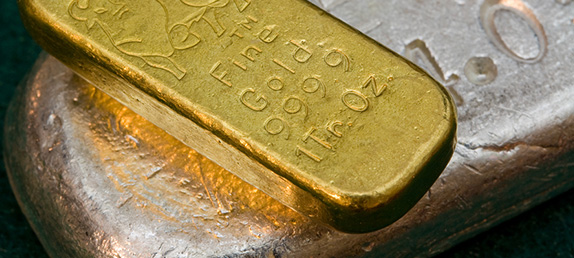
I often get people in my office who have been brainwashed by some financial advisor who says that precious metals, such as gold and silver, have no intrinsic value, and thus the man who claims it as a safe asset and store of wealth has been mislead by superstition. (Keep in mind these are the same geniuses that say not to buy physical gold even though in the last 12 years the price of gold has been higher every single year, with ZERO years of decline in between. Apparently, becoming a financial advisor has the same requirements that it takes to become the president of OUR United States!) Economists, financial advisors, and politicians of all stripes perpetuate this faulty sentiment. Gold, they claim, is just like anything else – it is only valuable to the extent that people trust it. Yet, this is not quite accurate. Gold, silver, and other precious metals do indeed have intrinsic value, and it’s time for the source of this value to be understood. Certainly, financial experts have no excuse for ignorance on this subject.
Other Commodities
To understand the value of precious metals, let’s first look at other commodities. Most commodities have an obvious intrinsic value. Lumber can be used to build houses and furniture, grain can be used as food, and oil is turned into energy for a variety of industrial purposes. Spectators are quite able to see the intrinsic value in these things. No reasoned individual would claim that oil is simply a shiny goo, valuable only because people “have faith” in it. It is valuable because it can be turned into gasoline and, when combined with an automobile, is able to convey you and all your stuff across vast distances.
Likewise, it is not from mere faith that grain derives its value, nor from trust and international contract that lumber commands a price on the market. Value in these commodities is clear and demonstrable, and it summons no great mental effort to comprehend.
But where is the intrinsic value of gold? Or silver? One can’t build houses, nor eat, nor drive a car with these commodities – their value must come from elsewhere.
Gold
To be sure, gold is shiny and has long been used in the crafting of jewelry and ornamentation. It has always been desired for these purposes. However, few wars have been fought over pearls, which also make lovely jewelry. No, it is neither the glimmering earrings nor necklaces that comprise the majority of gold’s intrinsic value. It is something else.
Silver
As to silver, we know it as a wonderful conductor of electricity. As such, the metal has intrinsic value in the production of circuits and electronics. Yet, this benefit was entirely irrelevant for most of man’s history, and still silver has always been precious. Like gold, the intrinsic value of silver must come from something other than these obvious societal uses.
Where Precious Metals Get Their Value
Their value comes from nothing less than their efficacy as a medium of exchange – as a form of money. It may sound weird at first, or perhaps tautological, to claim that gold is valuable because it can be used as value, but this is precisely the point. Precious metals, through their very nature, are simply commodities that are best suited to be used as money. A brief examination readily testifies the point.
Ponder, for a minute, what possible product on Earth could be used as money? Technically, anything could be used as money. We could all trade with cattle, or with sand, or with venti mocha lattés. But, what is it about these things that make them impractical as money? Cattle die, for starters, which is not ideal for savings. Sand is too plentiful… try to buy an ice cream cone with sand. You will need much of it. Venti mocha lattes are the most valuable per ounce, but they get cold, and will certainly expire with time. Continue this thought experiment with other items – you will come to realize that most things, while very useful for certain purposes, are lousy as money.
Eventually, you will stumble upon gold, and you will realize that it works beautifully as money. It is durable (it never rots or rusts), it is divisible and combinable (unlike diamonds), it is homogeneous (every ounce is the same as every other – unlike cigarettes, seashells, and birthday cakes), and it is scarce (unlike sand or grain). Silver mirrors these attributes, though it seems to be less scarce and thus less valuable per ounce.
It should then become apparent that gold has intrinsic value because of its natural properties and the circumstantial geological composition of the Earth. Perhaps on another planet, if gold extended forth from every hillside, it wouldn’t be practical to use it as money, as truckloads would be required for the smallest of purchases. But we’re not on another planet, and thus gold and other precious metals have proven themselves, over thousands of years, as the most effective type of money. This is where their intrinsic value comes from.
How, then, do we consider these metals against fiat paper currencies (such as US Dollars), which have been the modus operandi since the gold standard was fully abandoned in the 1970’s? Well, there’s really only one important difference. Dollars can be, and are continually, printed at whim by governments that need to buy the votes of the public. Gold and silver do not suffer the same embarrassment.
So the next time you hear a commentator state that gold has no intrinsic value, remember what is being overlooked – its ultimate value as money itself.

